Resources

Recommendation of the Council on SME Financing
OECD 2023
The Recommendation on SME financing was adopted by the OECD Council meeting at Ministerial
level on 8 June 2023 on the proposal of the Committee on SMEs and Entrepreneurship (CSMEE).
The Recommendation aims to support Adherents in their efforts to enhance SME access to a diverse
range of financing instruments. It supports the development of coherent national SME financing
strategies by helping define specific policy objectives, design and implement coherent policy
measures, strengthen the evidence base and provide a framework for monitoring and evaluation.

UNCTAD E-Commerce Week 2017 Summary Report
UNCTAD (April 2017)
The UNCTAD E-Commerce Week 2017 featured a range of events aimed at contributing to the global dialogue on the need to make the development of e-commerce inclusive. This third edition of the Week saw the participation of over 1,000 representatives from governments, international organizations, the private sector and civil society from 99 countries.

Status, Opportunities and Challenges of BRICS E-Commerce
UNIDO & ITC (2 August 2017)
During the last decade, along with the rapid development of information technology (IT), e-commerce1 has maintained swift growth and has become one of the world’s most dynamic economic activities. Latest estimates from UNCTAD show that global E-commerce reached US$ 25.3 trillion in 2015, of which US$ 22.4 trillion was B2B e-commerce and US$ 2.9 trillion B2C e-commerce2. E-commerce is playing an increasingly important role in promoting domestic and cross-border trade, industry transformation and job creation thereby providing overall strategic opportunities for the economic and social development for all countries. In this context, this report analyses the status of e-commerce in BRICS in the backdrop of global e-commerce trends. Due to the limited availability of reliable B2B and B2G e-commerce data in BRICS countries, the report relies mostly on B2C e-commerce data for cross comparative study and trend analysis in BRICS e-commerce.

SME and Entrepreneurship Policy in Canada
OECD Publishing (2017)
SMEs and entrepreneurs make an important contribution to the Canadian economy. SMEs account for 60% of total employment, and Canada performs very well across many measures of small business generation, growth and innovation. However, further increases in productivity in medium-sized firms, an increase in SME exports, a greater business start-up rate and an increased number of high-growth firms could bring substantial benefits for the national economy.
This report identifies several areas where new policy approaches could help achieve these objectives. Framework conditions for small business could be improved in business taxation, public procurement, access to financing and the commercialisation of research. New and extended programmes could be introduced in domains including entrepreneurship education, management advice and consultancy, and workforce skills development. A major effort is recommended to prioritise women’s entrepreneurship, including by supporting social enterprises, and federal support could be offered to support the exchange of information on best practice SME regulations and programmes among provinces and territories. All this could be brought together and co-ordinated through the umbrella of a national strategy and a lead agency for SME and entrepreneurship policy.

Think Big for Small: Small and Medium Enterprises as Pillar for Future-oriented, Sustainable Growth
G20 Germany 2017 Business 20 Dialogue Policy Paper (March 2017)
In most countries, Small and Medium-sized Enterprises (SMEs) contribute over 50 percent to gross domestic product (GDP) and two thirds to formal employment. SMEs, which often form the backbone of the middle class, are important for social stability, innovation, inclusive growth, and poverty alleviation. They are indispensable for a future-oriented, sustainable global economy.

Small, Medium, Strong. Trends in SME Performance and Business Conditions
OECD Publishing (May 2017)
This work is publishing under the responsibility of Secretary-General of OECD. The opinions expressed and arguments employed herein do not necessarily reflect the official views of OECD member countries
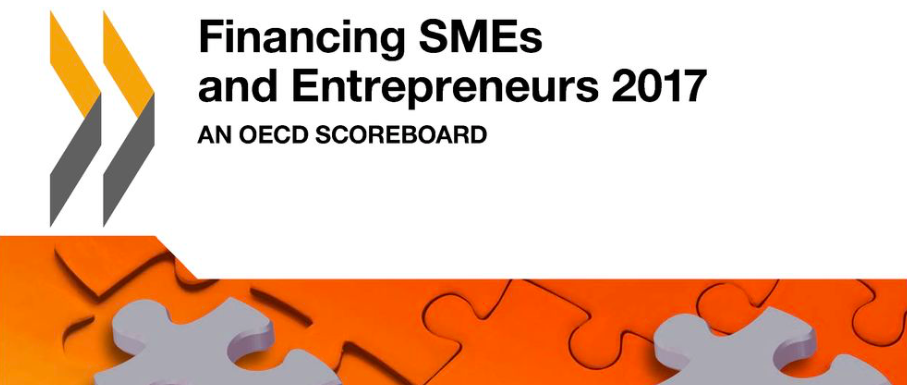
Financing SMEs and Entrepreneurs 2017 An OECD Scoreboard
OECD (April 2017)
Financing SMEs and Entrepreneurs 2017 provides information on debt, equity, asset-based finance, and framework conditions for SME and entrepreneurship finance, complemented with an overview of recent policy measures to support access to finance in 39 countries.
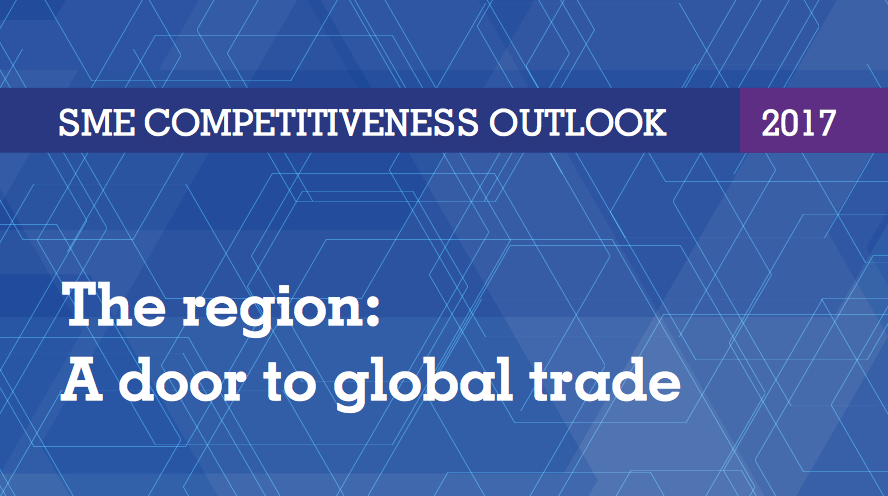
SME Competitiveness Outlook 2017 - The Region: A Door To Global Trade
International Trade Centre (October 2017)
Regional trade is the most common form of trade for small and medium-sized enterprises (SMEs).
SMEs typically look at neighbouring countries for their first international operation. In this context, SMEs are likely to encounter international value chains. Most international trade takes place within such value chains and – as shown in this report – many value chains operate mainly at a regional level. For most SMEs, value chains represent an entry point into internationalization. The discussion of regional value chains therefore takes a central stage in this report.

Trouble in the Making? The Future of Manufacturing-Led Development
Mary Hallward-Driemeier, Gaurav Nayyar (20 September 2017)
Throughout history, lower-income countries have relied on manufacturing, which provides jobs for unskilled workers, helps increase productivity, and drives economic growth, as a central driver of development. However, success in manufacturing and global value chains is currently concentrated in a limited number of countries. In 2015, 55% of the world’s manufactured goods were produced in high-income countries. China, the world’s largest producer, accounted for another 25%. Where does this leave other countries? A new report from the World Bank Group’s Trade & Competitiveness Global Practice, Trouble in the Making? The Future of Manufacturing-Led Development, explains that the criteria for becoming a desirable manufacturing location are changing. Companies once influenced by the prospect of inexpensive labor costs are beginning to favor locations that can better take advantage of new technologies.

Another Side to the Story: A Market Assessment of Syrian SMEs in Turkey.
Selen Ucak, Jennifer P. Holt & Kavya Raman (August 2017)
The report offers a snapshot of Syrian-owned micro, small and medium-sized enterprises (SMEs) operating in Turkey. Through research, interviews, and analysis of data from 230 Syrian businesses, it highlights trends and challenges associated with doing business in the country as well as findings and recommendations intended to inform policies, strategies, and programs that will maximize the positive social and economic impact of Syrian SMEs on the Turkish economy, society, and refugee crisis.
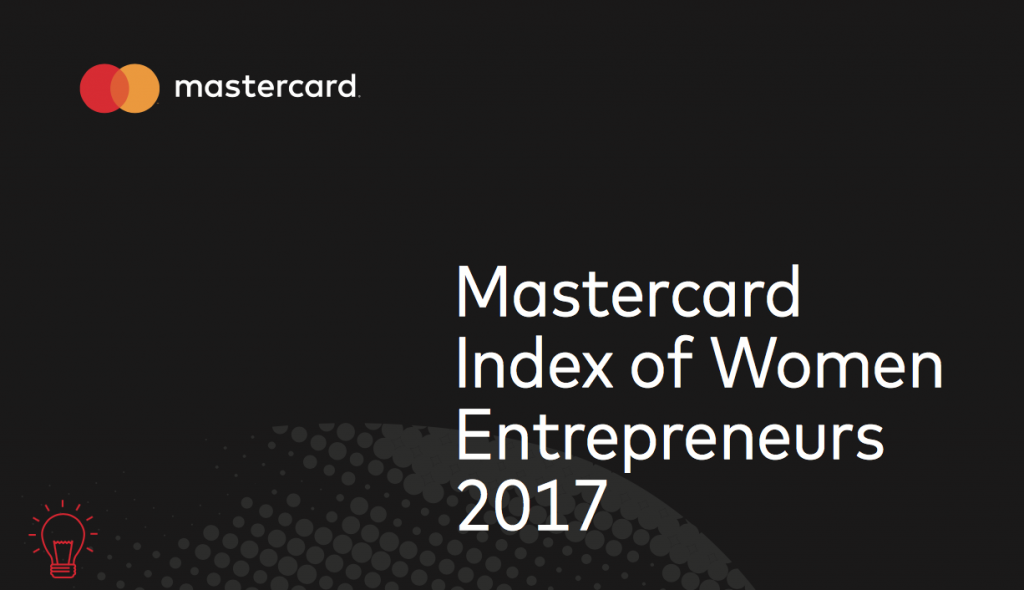
MasterCard Index of Women Entrepreneurs
Georgette Tan (March 2017)
The Mastercard Index of Women Entrepreneurs tracks female entrepreneurs’ ability to capitalize on opportunities granted through various supporting conditions within their local environments and is the weighted sum of three components: 1) Women’s Advancement Outcomes (degree of bias against women as workforce participants, political and business leaders, as well as the financial strength and entrepreneurial inclination of women), 2) Knowledge Assets and Financial Assets (degree of access women have to basic financial services, advanced knowledge assets, and support for small and medium enterprises), and 3) Supporting Entrepreneurial Conditions (overall perceptions on the ease on conducting business locally, quality of local governance, women’s perception of safety levels and cultural perception of women’s household financial influence).
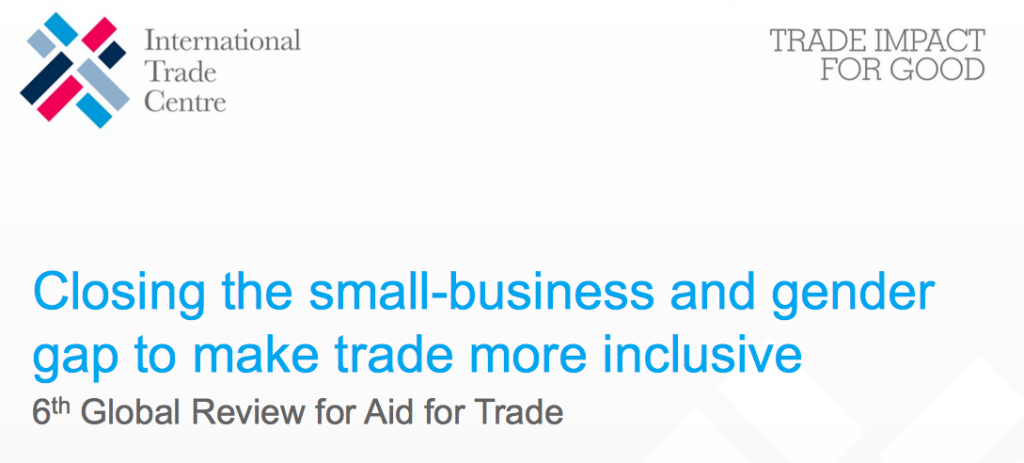
Closing the Small-Business and Gender Gap to Make Trade More Inclusive
Jasmeer Virdee (30 May 2017)
This publication analyses that the smaller, the company, the more likely they are to employ low skilled, women, youth or other vulnerable workers’ conditions in business sphere. Their main obstacles are connectivity gap for both other SMEs, national markets and global markets even in most countries, SMEs are often the biggest source of new jobs, even if many fail within a few years.Getting more SMEs to connect to international markets is one way to help ensure SMEs keep growing and make the jobs they create stick.
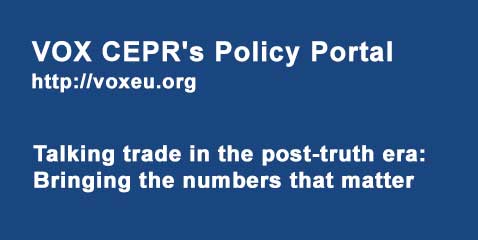
Talking trade in the post-truth era: Bringing the numbers that matter
Lucian Cernat, Marion Jansen © voxEU.org (February 2017)
For some time, it was possible to win over trade sceptics by providing explicit numbers reflecting the losses from protectionism. Now it seems that the larger public has become indifferent to evidence-based debates. This column argues for increased use of micro-evidence and firm-level data in policy debates to make the case for trade. By linking trade to personal well-being, an increased focus on micro-economic evidence can generate stronger narratives and greater credibility among voters.

New Pathways to E-Commerce: A Global MSME Competitiveness Survey
International Trade Centre (25 September 2017)
E-commerce has opened a gateway of new opportunities for micro, small, and medium-sized enterprises (MSMEs) to access international markets, find new sources of demand, and build value through exposure to new technologies.
To ensure that micro, small and medium-sized enterprises (MSMEs) can benefit from e-commerce, they need better access to e-platforms, payment and delivery services; streamlined customs procedures; and targeted skill building. These are the key findings from this ITC survey of 2,200 MSMEs in 111 countries. In addition, the survey reveals that the share of logistics costs over final price is nearly double in developing countries than in developed countries and that product return is a significant cost factor for enterprises from least developed countries.

Firm Dynamics and Job Creation in Turkey – Some Preliminary Results
İzak Atiyas, Ozan Bakış, Yusuf Kenan Orhan (September 2017)
This paper uses the Business Registers (BR) data set put together by the Turkish Statistical Office to examine patterns of firm entry, exit, employment growth, job creation and job destruction in Turkey over the period 2005-2012. In particular, we examine the role of small firms in total job creation. We find that distribution of employment has moved from very small (1-2 employees) and very young firms to larger and older firms over this period. Almost half of net job creation over the period has been generated by firms that have only one or two employees in the base year. This measurement is sensitive to how firm size is classified: when firms are classified according to average size rather than size in the base year, the share of very small firms in total net job creation appears smaller and the share of larger firms appears higher. While the share of very small firms (1-2 employees) in new entry is very high, 43 percent of very small existing firms and 48 percent of very small new entrants die within 5 years. Relative to existing firms, a higher proportion of new entrants grow into higher size groups. Econometric analysis shows that controlling for age, the role of firm size in job creation is negligible. By contrast, we find econometric evidence that controlling for firm size, younger firms create more jobs than older firms.
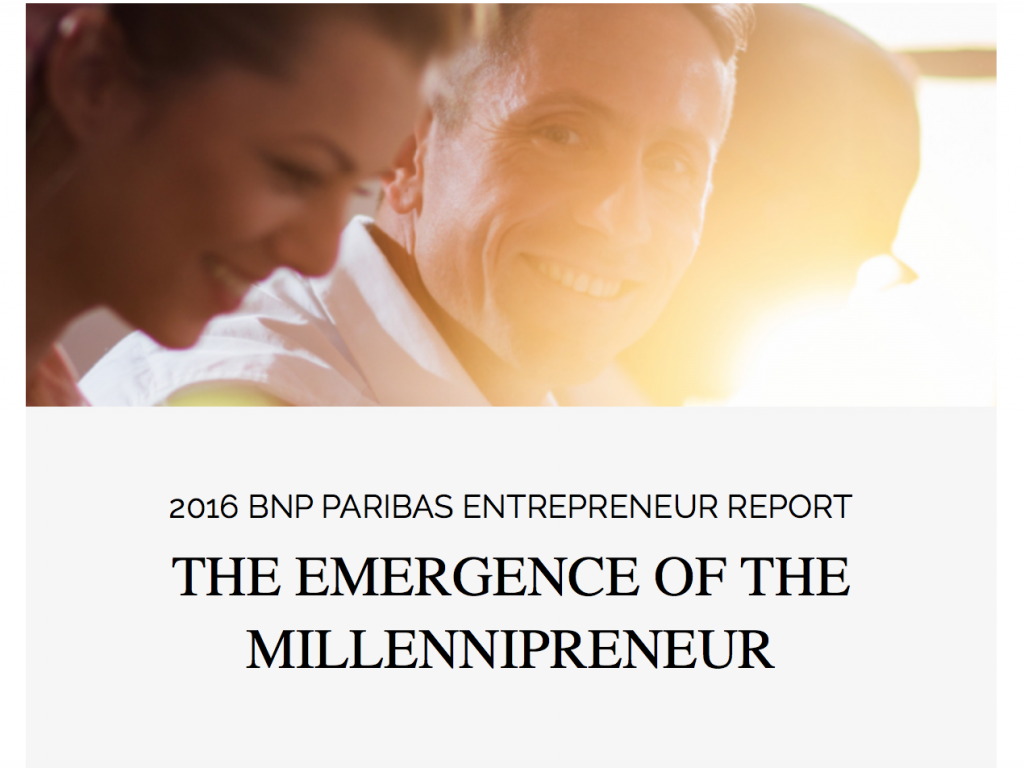
The Emergence Of The "Millennipreneur"
Scorpio Partnership, BNP Paribas (August 2016)
Conducted among 2,600 entrepreneurs based in 18 countries, in Asia, Europe, and the United States, the study led by Scorpio Partnership reveals the emergence of a new generation of entrepreneurs under 35, “The Millennipreneurs”. From Generation Y, born between 1980 and 1995, they stand out by creating an increased number of companies, both in the new economy and traditional sectors.They average launched about 8 companies, against 3.5 for their elders, and have a turnover of more than 43% that of the baby boomer generation. Among them, women are more successful than men. Providing a profit margin of 35%, they are most active in Poland, Spain and China, in sectors such as trade, professional services and fashion. This study indicates that the most attractive regions are the United States, China and Germany, entrepreneurs based in China, India and Turkey, achieving a better year.

Financing Sustainable Growth For SMEs Globally
Gianluca Riccio (April 2017)
This report is authored* by Gianluca Riccio, CFA, Gianluca assumed the Chair of the Business at OECD-B20 event held on 22 March 2017 at the OECD. He is also Vice-Chair of the BIAC Finance Task Force and member of the B20 Germany Financing Growth & Infrastructure Task Force and Cross-thematic Group on SMEs.
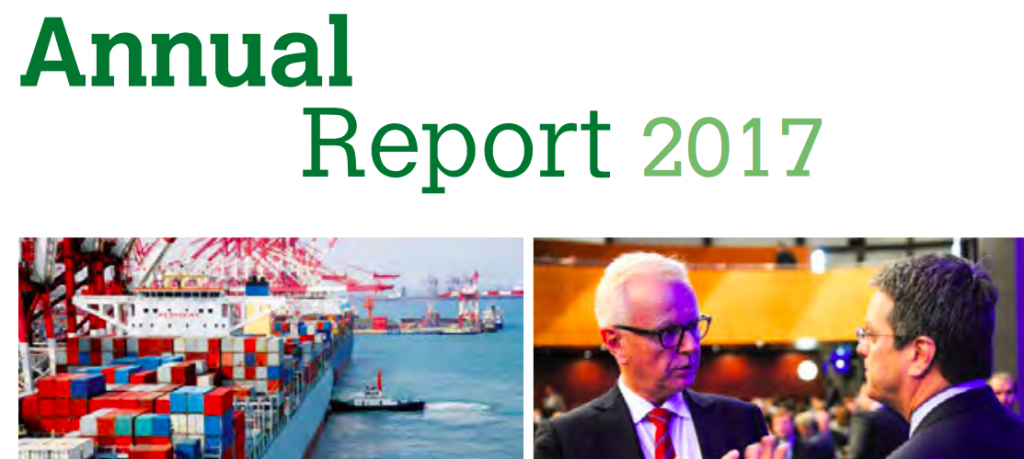
World Trade Organisation Annual Report 2017
WTO Publishing (2017)
There are a number of ways of looking at the World Trade Organization. It is an organization for trade opening. It is a forum for governments to negotiate trade agreements. It is a place for them to settle trade disputes. It operates the global system of trade rules.
It helps developing countries build their trade capacity. Essentially, the WTO is a place where member governments try to sort out the trade problems they face with each other.

G20 Germany 2017 - Business 20 Dialogue - Factsheet
B20 Germany (December 2016)
The Business 20 (B20) is the official G20 dialogue with the global business community. On September 4 2016, the leading German business associations BDI, BDA, and DIHK, mandated by the German Chancellery, assumed the B20 presidency. Chair of B20 Germany is Dr. Jürgen Heraeus.
